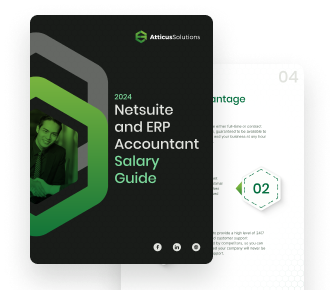Maximizing ROI: The Power of Positive Onboarding Experiences

When you start a new job, you want to feel welcomed, valued, and supported. A positive onboarding experience can go a long way in shaping your expectations and setting you up for success.
On the other hand, a negative onboarding experience can leave you feeling disconnected, disengaged, and uncertain about your future with the company.
Designing an effective onboarding process involves more than just filling out paperwork and attending orientation sessions. It requires a strategic approach that takes into account the unique needs and preferences of new hires.
Creating a welcoming company culture, cultivating employee engagement and retention, and measuring success, and addressing challenges are all critical components of a successful onboarding program.
Designing an Effective Onboarding Process
When creating a positive onboarding experience, a well-designed and structured onboarding process is the first step.
A structured onboarding program helps new employees feel more comfortable and confident in their new role and sets the foundation for their success within the company.
Here are four key elements to consider when designing an effective onboarding process.
- Setting Clear Expectations
- Understanding Onboarding Fundamentals
- Structuring the Onboarding Plan
- Integrating Technology and Resources
1. Setting Clear Expectations
One of the most important things to do during onboarding is to set clear expectations for the new employee. Outline their goals and responsibilities, as well as the company's expectations for their performance.
Clear communication is key, and it's essential to ensure that the new employee understands what is expected of them from day one.
2. Understanding Onboarding Fundamentals
Understanding the fundamentals of onboarding is important to creating an effective onboarding process. This includes understanding the difference between onboarding and orientation and the different stages of the onboarding process.
You can create a more structured and effective onboarding plan by understanding these fundamentals.
3. Structuring the Onboarding Plan
An effective onboarding plan should be structured and well-organized. This includes creating a detailed plan for the new employee's first week and outlining the goals and milestones for their first 30, 60, and 90 days on the job.
By structuring the onboarding plan this way, you can ensure the new employee has a clear roadmap for success.
4. Integrating Technology and Resources
Technology and resources can be crucial in creating a positive onboarding experience. Utilize tools like online training modules and employee handbooks to help your new employees learn about the company and their roles.
Additionally, providing your new employees access to resources they need to succeed, such as mentors and support networks, creates more opportunities for them to grow.
Combining these elements, you create a structured and effective plan that gives your new employees the edge and motivation to succeed.
Remember, a positive onboarding experience can help to improve retention rates, boost employee engagement, and set the foundation for a successful career within your organization.
Creating a Welcoming Company Culture
Starting a new job can be stressful and overwhelming, but a welcoming company culture can make all the difference.
A positive onboarding experience is crucial for new employees to feel comfortable and confident in their new workplace.
Here are four ways to create a welcoming company culture:
1. First Impressions on Day One
The first day sets the tone for the rest of the onboarding process. Warmly welcome your new employees and give them a tour of the workplace.
A personalized welcome note or gift can also make a great first impression. Gift them a welcome package with information about the company, their team, and the workplace culture.
2. Fostering Team Connections
Encourage new employees to get to know their team members and build relationships. Consider setting up a buddy or mentor system to help new employees integrate socially and feel supported.
Regular check-ins help identify any issues or concerns and provide an opportunity for feedback.
3. Mentorship and Support Systems
Mentorship and support systems help new employees feel more confident and comfortable in their new roles.
Provide them with a mentor or buddy who can answer any questions and guide them through the onboarding process.
Regular check-ins with their manager can also help identify areas that need additional support.
4. Understanding Company Mission and Values
Why do new employees need to understand the company's mission and values?
It encourages them to feel more connected to the workplace and understand how their role fits into the bigger picture.
Consider providing them with a company handbook or other resources that explain the company's culture, values, and goals.
When you overlook creating a welcoming company culture, you miss out on making a comfortable and supportive environment for your new hires.
By fostering a healthy and welcoming working environment, your team becomes more productive and engaged members of the company.
Cultivating Employee Engagement and Retention
As a company, you want to create a positive onboarding experience that cultivates employee engagement and retention. You want your new hires equipped to succeed from day one. Doing so can increase job satisfaction, retention rates, and employee satisfaction.
Here are five ways to create a positive onboarding experience that fosters engagement and retention.
1. Role Clarity and Responsibilities
One of the most important aspects of onboarding is providing new hires with a clear understanding of their role and responsibilities.
At Atticus Solutions, we understand that our niche talents require specific skills and knowledge. We ensure that our new hires understand their role and responsibilities so they can hit the ground running from day one.
2. Setting Clear Expectations
Besides role clarity, it's essential to set clear expectations for your new hires. At Atticus Solutions, our new hires understand our expectations so they can perform at their best.
By setting clear expectations around performance, behavior, and communication, you can ensure your new hires align with your company's values and goals.
3. Continuous Feedback and Communication
Communication is key to cultivating employee engagement and retention.
Provide continuous feedback and communication to your new hires, from regular check-ins to performance reviews and open-door policies. This will help them feel supported and valued.
4. Training and Development Opportunities
Providing training and development opportunities is another way to cultivate employee engagement and retention.
Investing in your employees' professional development can increase job satisfaction and employee loyalty.
At Atticus Solutions, our employees have unlimited access to ongoing training and development opportunities, supporting their continued growth and success in their roles.
5. Evaluating and Recognizing Progress
Finally, evaluating and recognizing your employees' progress is essential. Doing so shows them you value and appreciate their hard work and dedication.
For us at Atticus Solutions, we evaluate our employees' progress regularly and recognize their achievements through various channels, including promotions, bonuses, and awards.
Creating a positive onboarding experience is essential for cultivating employee engagement and retention.
By providing role clarity, setting clear expectations, providing continuous feedback and communication, offering training and development opportunities, and evaluating and recognizing progress, you can set your new hires up for success and increase employee satisfaction.
Measuring Success and Addressing Challenges
Successfully onboarding new employees can lead to increased productivity, job satisfaction, and retention rates.
However, it's important to measure the effectiveness of your onboarding process to ensure that it's meeting the needs of both the company and the new hire.
Here are the four main areas to evaluate when measuring the success of your onboarding process.
1. Evaluating Onboarding Effectiveness
One way to evaluate the effectiveness of your onboarding process is by tracking metrics such as time to productivity, employee engagement, and retention rates.
According to Factorial, tracking these metrics can help you identify areas where your onboarding process may need improvement.
Another way to evaluate your onboarding process is by gathering feedback from new hires through surveys or one-on-one meetings.
By asking new hires about their experience with the onboarding process, you can identify areas for improvement and make changes to ensure a positive experience for future hires.
2. Navigating Remote Work Challenges
Remote work has become increasingly common in recent years, and the COVID-19 pandemic has accelerated this trend. As a result, many companies are now onboarding new hires remotely.
While remote onboarding can be challenging, there are steps you can take to ensure a smooth process.
First, new hires should be provided access to all the necessary technology and equipment. Whether it’s providing them with a company laptop or ensuring they have access to the software your company uses.
Second, give clear instructions and expectations for remote work, guidelines for communication, work hours, and productivity.
3. Ensuring Compliance and Clarification
Compliance ensures new hires are aware of company policies, procedures, and legal requirements. Train them on workplace safety, anti-discrimination policies, and data privacy.
In addition to compliance, clarify job duties and expectations by outlining specific goals and objectives and providing training and development opportunities.
4. Reducing Turnover Rates
High turnover rates can be costly for companies. According to NetSuite, effective onboarding can help reduce turnover rates by ensuring that new hires are engaged and committed to the company.
To reduce turnover rates, provide ongoing support and training to new hires. You can assign them a mentor or buddy to help them navigate their new role. They can also offer regular feedback and opportunities for growth.
By measuring the effectiveness of your onboarding process and addressing challenges as they arise, you can ensure a positive experience for new hires and set them up for success in their new role.
Conclusion
Want to ensure a positive start for new hires? Go beyond the basics of paperwork and orientation sessions!
The significance of a well-crafted onboarding experience cannot be overstated. It is the foundation upon which employees build their impressions of the company, influencing their sense of belonging, engagement, and commitment.
A comprehensive approach that considers individual needs, fosters a supportive culture, and continuously evaluates and improves the process is paramount.
By prioritizing these elements, not only do you enhance employee satisfaction and retention, you also lay the groundwork for long-term success and growth.
Ready to transform your onboarding process? Book a call with Atticus Solutions today to unlock the power of positive onboarding experiences!
Our expert team is here to help you design a comprehensive approach tailored to your company's needs, fostering a supportive culture and maximizing employee satisfaction and retention.
Don't settle for standard onboarding—elevate your new hires' experience with Atticus Solutions. Schedule your consultation now!
Frequently Asked Questions

Compare NetSuite ERP talent salaries
Attracting top NetSuite talent with clear job descriptions is the first step. Understanding salaries is your next key move! Download this free salary guide to view talent costs, offshore hiring tips, and more
Learn how to scale your business

What is Your Strategy for Finding Rare Skill Sets like NetSuite Accountants?
Join our talented team. We are a small, passionate team with a commitment to hiring the best.




